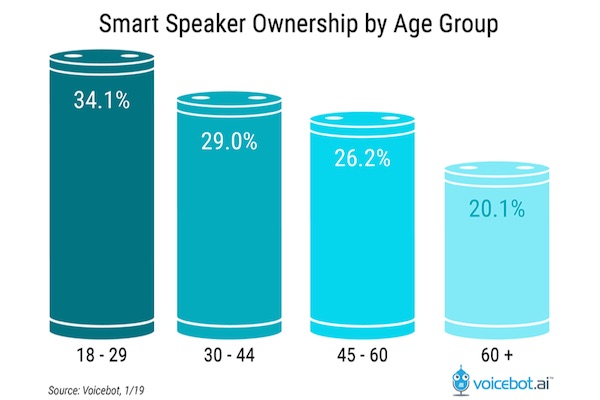Voice Assistant Demographic Data – Young Consumers More Likely to Own Smart Speakers While Over 60 Bias Toward Alexa and Siri
- 34% of U.S. 18-29-year-olds owned a smart speaker at the beginning of 2019 while the figure for the over 60 population was just 20%.
- The use of voice assistants on smartphones follows a similar pattern but is less extreme with over 80% of under 30 consumers saying they’ve used a smartphone-based voice assistant compared to about 60% for the oldest age group.
- However, the frequency of smart speaker use is less age-dependent as 60 years and older device owners actually exceed that of the 18-29 group with 46.6% as daily users compared to 43.1% respectively. The 30-44 age group was most active with 51.3% daily users.
- Consumers over 60 skew significantly toward Amazon Alexa use for smart speakers and Apple Siri on iPhones. Google Assistant and its primary distribution of Google Home smart speakers and Android smartphones are not very popular among older Americans.
Voicebot data on voice assistant ownership and usage by age group show that younger Americans in the 18-29 age group are about 75% more likely to own a smart speaker than those over 60. In fact, we see a clear pattern of younger consumers owning the devices than each successive age group.
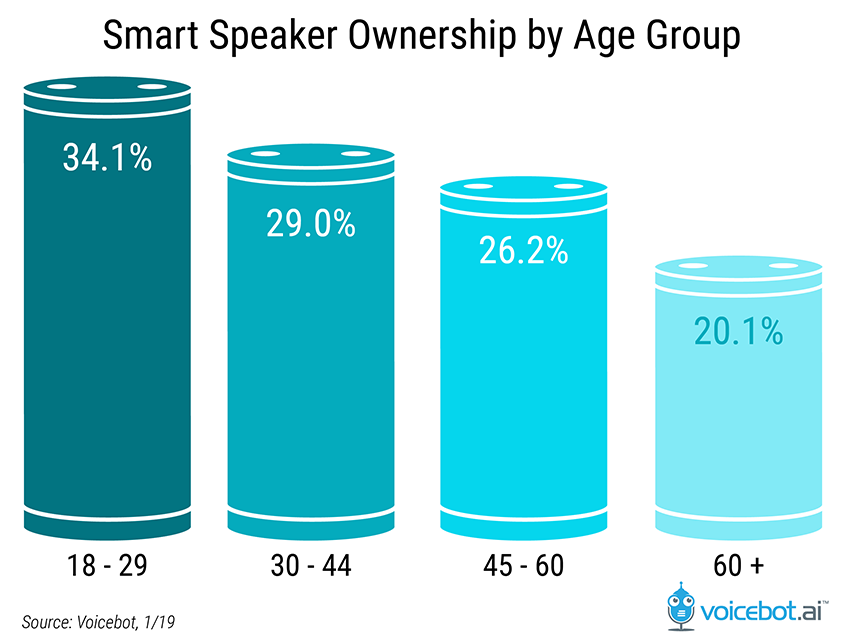
Another age-influenced smart speaker data point appears to be brand choice. Consumers that are 45 or older over-index for Amazon smart speaker ownership while younger Americans are less likely than average to choose those devices. This doesn’t necessarily mean, however, that younger consumers are biasing toward Google Home devices. The 30-44 age group does own Google Home devices at a rate of 31.7%, far higher than 23.9% overall average. However, 18-29-year-olds actually fall slightly below the average for Google Home ownership but significantly over-index for owning “other” devices which range from Apple HomePod and Sonos to offerings by other specialty brands.
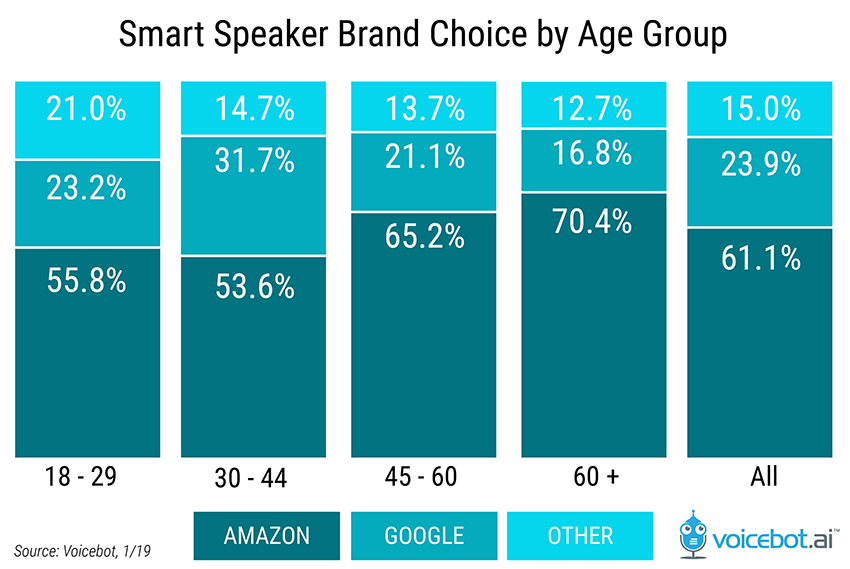
Smart home technology today is often sold alongside smart speakers and that segment also shows a slight skew toward younger device owners. However, the range of difference is far less. While 58.8% of under 30 smart speaker owners say they also have at least one smart home device, the figure is 53.4% for over 60 consumers. The 5.4% difference suggests that consumers that are tech-savvy enough to own a smart speaker often see a clear benefit in smart home technology and are comfortable with it.
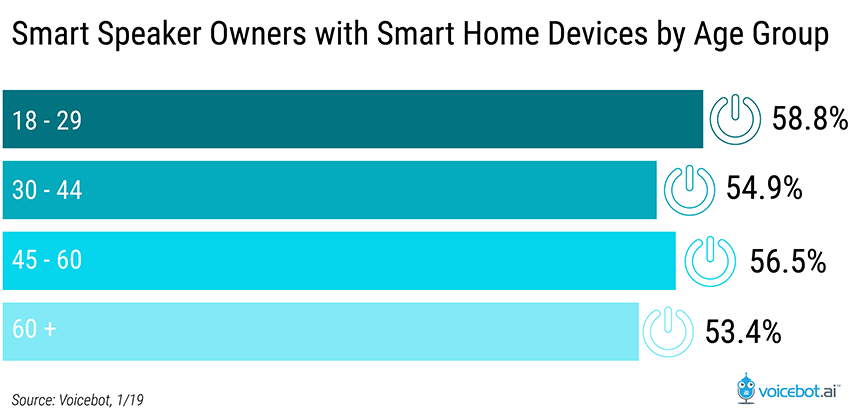
Frequency of Smart Speaker Use is Less Age-Influenced
However, once a device is adopted, we see less variation of usage patterns among the age groups. In fact, consumers over 60 may be less likely to own a smart speaker than the under 30 crowd, but they are slightly more likely to be a daily active user if they do have a device. Daily smart speaker use is 46.6% for over 60-year-old users compared to just 43% for those under 30. The highest use frequency in this category is 51.3% daily usage by the 30-44 age cohort.
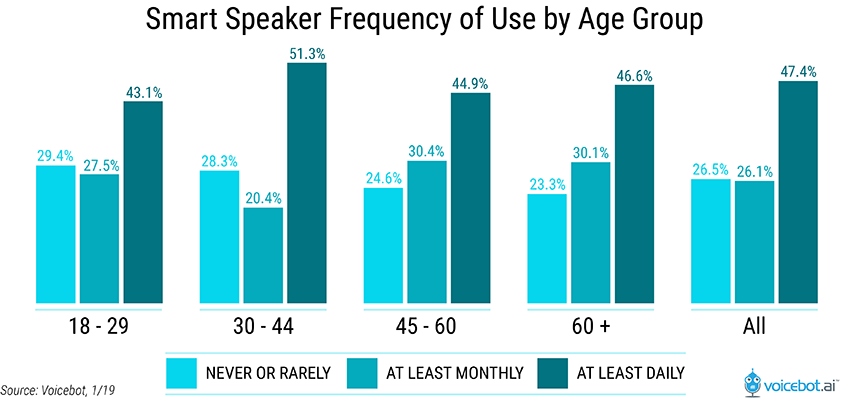
Voice Assistant Use on Smartphones Skew Toward Younger Users
Like smart speaker ownership, voice assistant use on smartphones also skews toward younger users. However, adoption is fairly significant across age groups. Consumers over 60 have tried voice assistants on smartphones at a rate exceeding 60%. The 45-60 age group approaches 69% for voice assistant trial, the 30-44 group is nearly 75%, and the under 3o age range exceeds 80%.
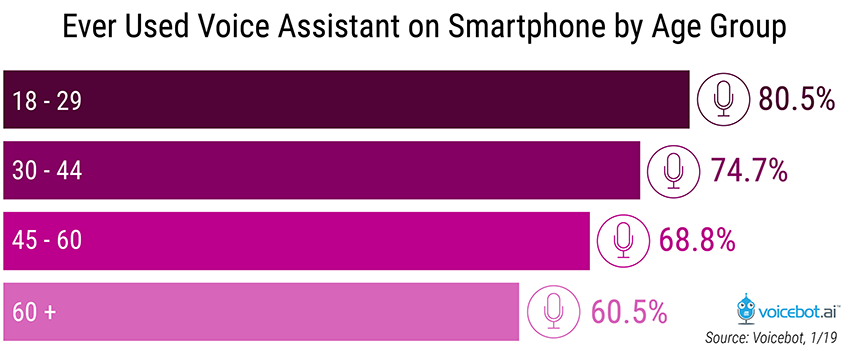
It is clear that awareness of voice assistants on smartphones is high given the trial rates. We also see an age-related brand preference for voice assistants on smartphones. Siri adoption is higher among over 60 adults and least popular among the 30-44 age group. More striking is that over 60 adults are well below the 27.7% average for Google Assistant use with only 19.1% saying they have used it. Google Assistant both on smart speakers and smartphones sees its strongest adoption in the 30-44 age group.
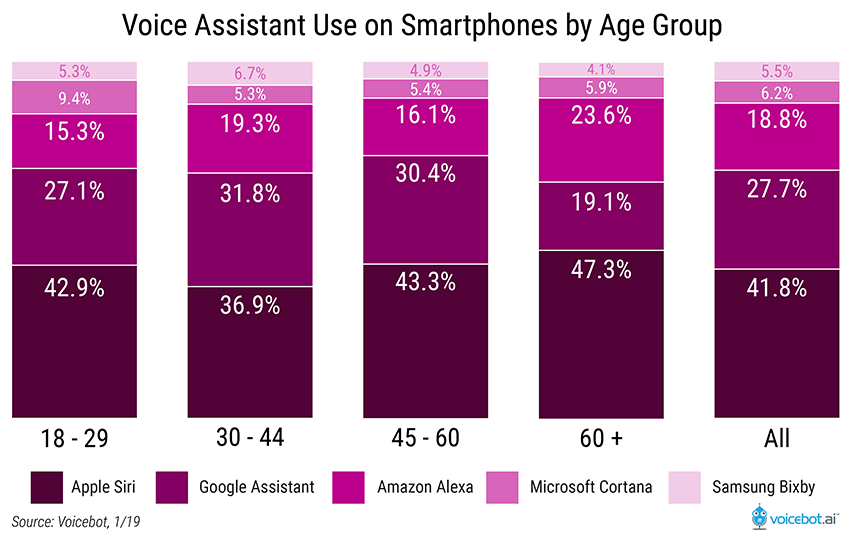
Smartphone Voice Assistant Use Fairly Similar Across Age Groups
There is virtually no difference by age group for daily voice assistant use on smartphones among the 18-29, 30-44, and over 60 age groups. The 45-60 cohort has the highest daily usage rate at 31.8%. It is worth noting that the user base of voice assistants on smartphones is larger but the frequency of use is higher on smart speakers. The ratio of never/rarely, monthly, and daily users is nearly the inverse on the two platforms. This may not be surprising when you consider that the dominant user interface for smartphones is the screen, but this also suggests significant growth potential for voice assistant use on mobile devices.
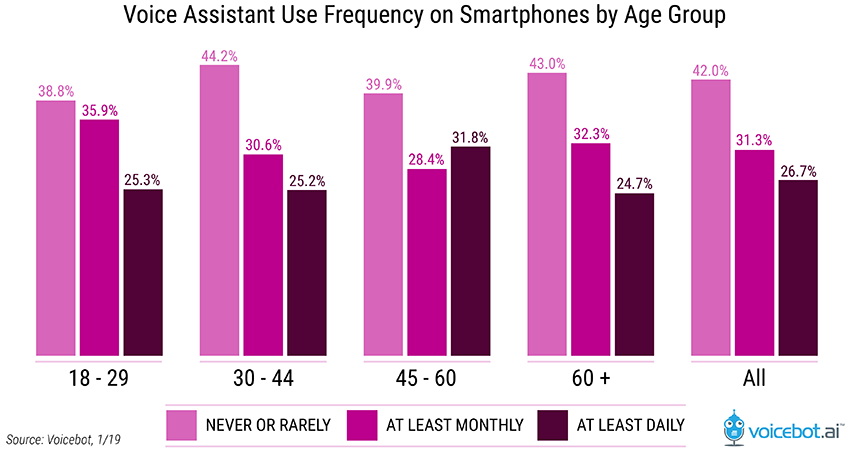
Overall, the age-related differences for voice assistant use are fairly minor with the exceptions of smart speaker ownership and brand preference. Voice assistant adoption is not being driven by a single age cohort and instead appears to have appeal across the general population.
Follow @bretkinsella Follow @voicebotai
Smart Speaker Owners Agree That Questions, Music, and Weather are Killer Apps. What Comes Next?


